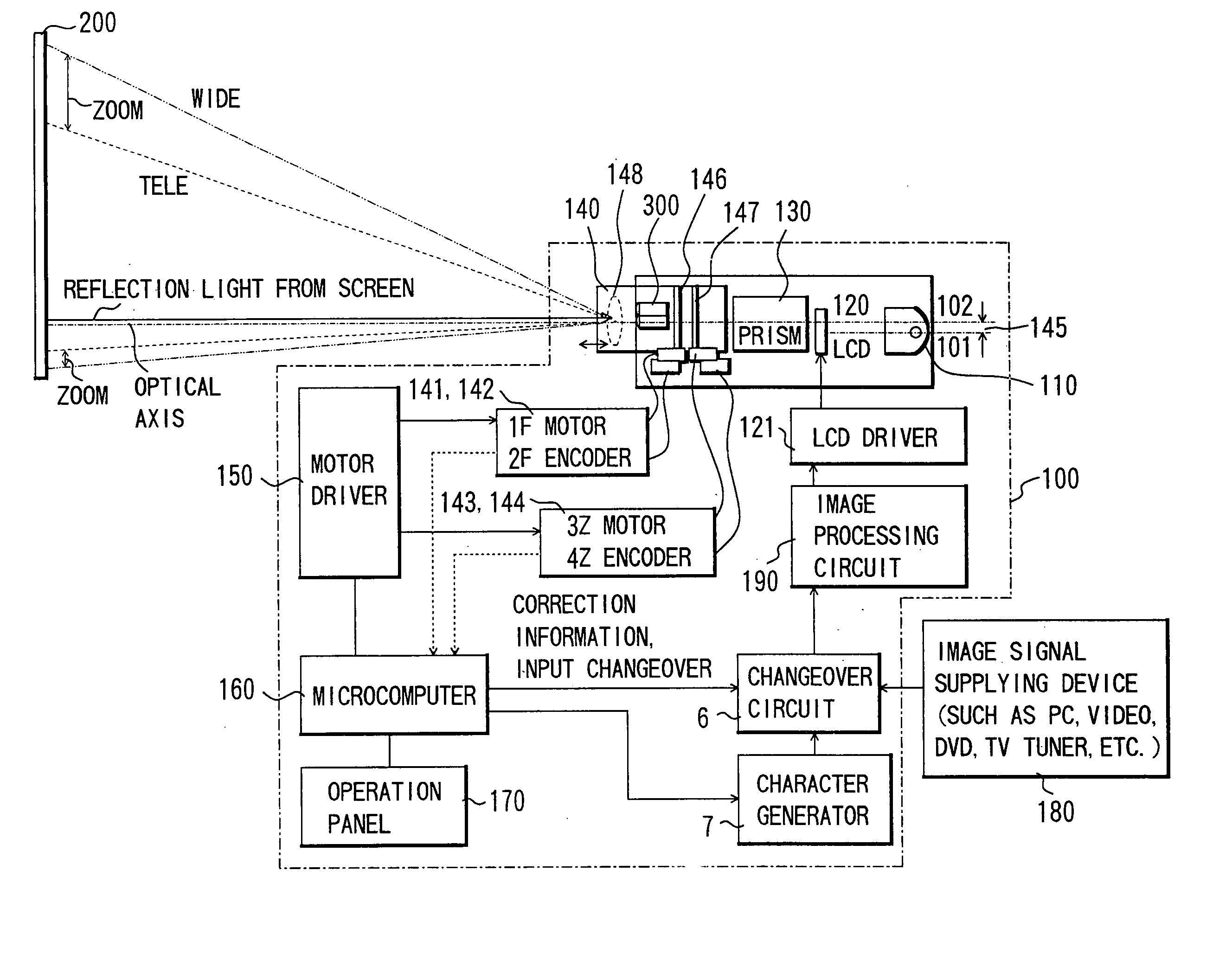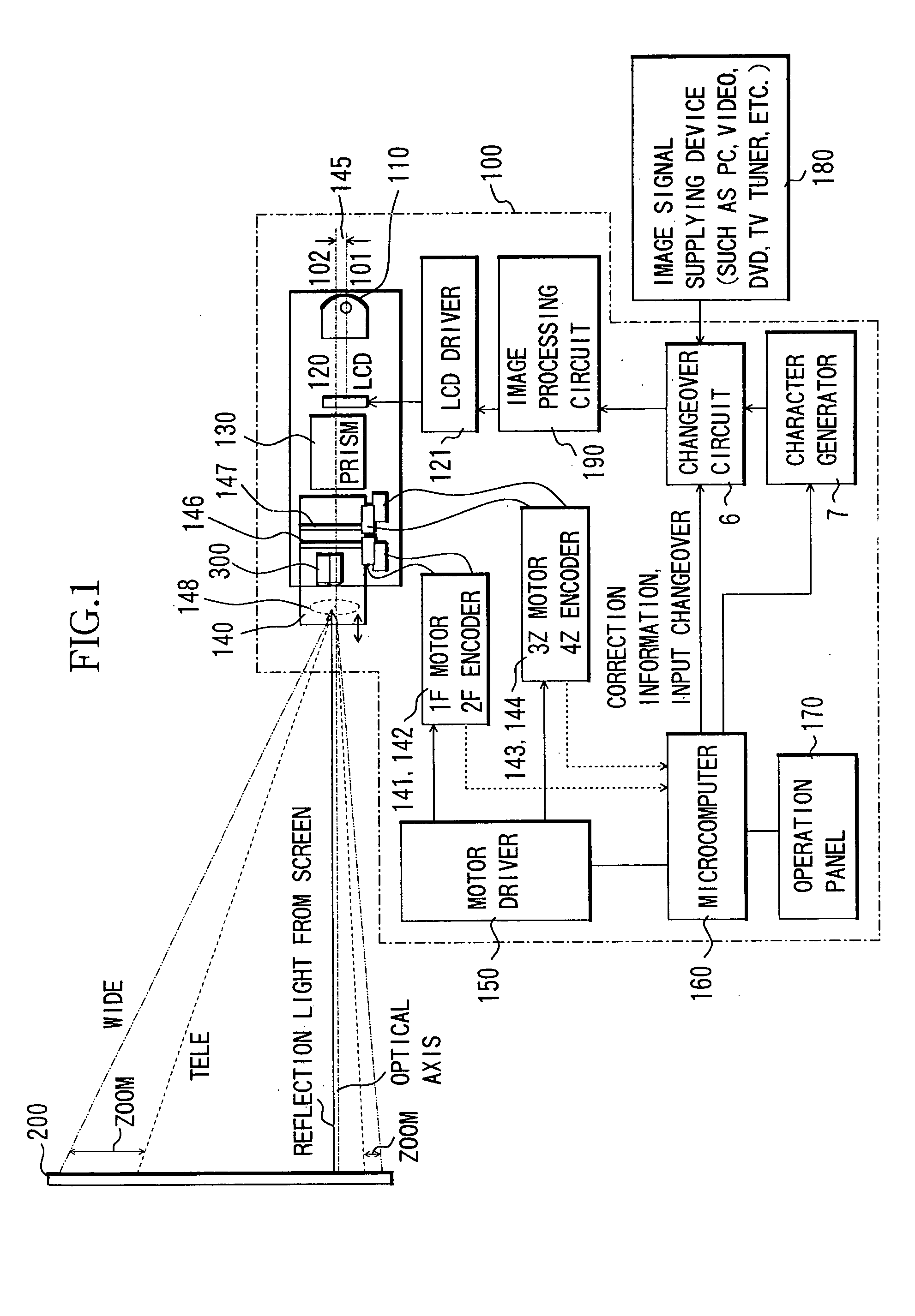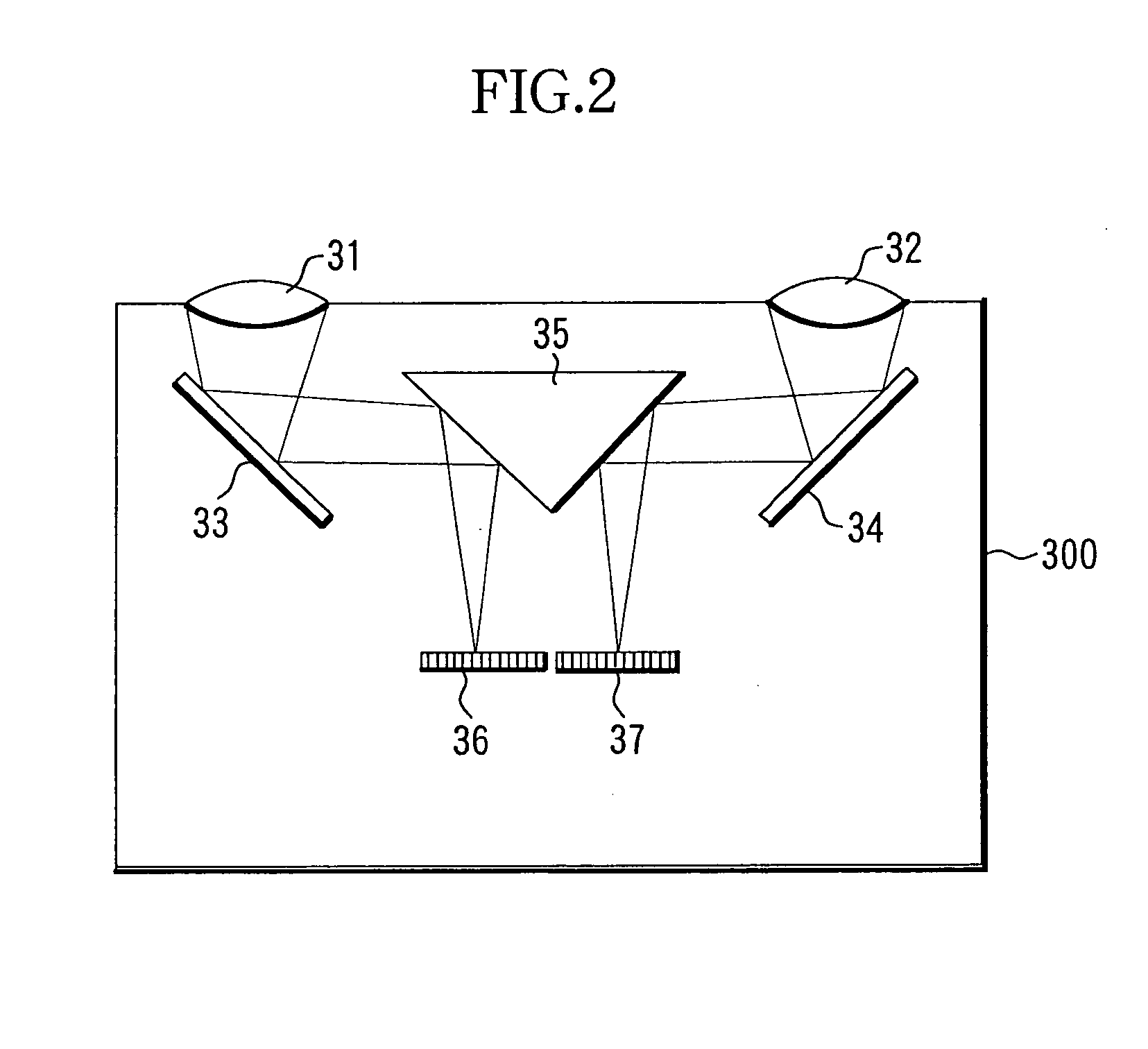Image-projecting apparatus
a projecting apparatus and image technology, applied in the direction of printers, cameras, instruments, etc., can solve the problems of unnecessarily erroneous detecting operations, increased costs, and no technology to improve af accuracy, so as to achieve satisfactory af accuracy
- Summary
- Abstract
- Description
- Claims
- Application Information
AI Technical Summary
Benefits of technology
Problems solved by technology
Method used
Image
Examples
embodiment 1
[0032]FIG. 1 shows a structure of 3-plate type liquid crystal projector with an AF (image-projecting apparatus) according to Embodiment 1 of the present invention.
[0033] In FIG. 1, reference numeral 100 denotes a liquid crystal projector. Reference numeral 110 denotes a light source, 120 denotes a transmission type liquid crystal display panel, 130 denotes a cross dichroic prism, 140 denotes a zoom projecting lens (projection optical system), 150 denotes a motor driver, 160 denotes a microcomputer operating as a controller, 170 denotes an operation panel, 180 denotes an image signal supplying device such as a personal computer (PC), a video, a DVD player, a television tuner, etc., 190 denotes an image processing circuit, 200 denotes a screen, and 300 denotes a passive AF sensor including a light-receiving element.
[0034] The basic structure of the projector 100 is a general structure of a 3-plate type liquid crystal projector. That is, three transmission type liquid crystal display...
embodiment 2
[0106]FIG. 7 shows a structure of a 3-plate type liquid crystal projector (image-projecting apparatus) with an AF feature according to Embodiment 2 of the present invention.
[0107] Although, in Embodiment 1, a description was given of a case where a passive AF sensor for distance detection (or focusing detection) is used both as a sensor for detecting the brightness in a projection area and an area other than the projection area, in Embodiment 2, an exclusive brightness detection sensor is employed.
[0108] In FIG. 7, reference numeral 400 denotes a projector, 440 denotes a projecting lens, and 300 denotes a passive AF sensor which is similar to that of Embodiment 1.
[0109] Reference numeral 300a denotes a field of view of the passive AF sensor 300, and reference symbol C denotes an AF chart projected from the projecting lens 440 so that a part thereof is included in the field of view 300a.
[0110] Reference numeral 410 denotes a projection area light-receiving intensity sensor (the f...
embodiment 3
[0113]FIG. 8 shows a structure of a 3-plate type liquid crystal projector (image-projecting apparatus) 400′ with an AF according to Embodiment 3 of the invention.
[0114] In the present embodiment, a sharpness detecting method (a so-called “blurring method” or “contrast detecting method”) is employed as an AF method. A sharpness detection type AF sensor 500 is employed instead of the two-image correlation detection type AF sensor 300 shown in Embodiment 1.
[0115] Reference numeral 500a denotes a field of view of the AF sensor 500. The field of view 500a is established so that it includes a part of the AF chart C projected from the projecting lens 440.
[0116] And, in addition to the AF sensor 500, the light-receiving intensity sensor 410 in the projection area and light-receiving intensity sensor 420 outside the projection area, which are described in Embodiment 2, are employed. Also, elements which are the same as those in Embodiment 2 are given the same reference numerals. Herein, o...
PUM
 Login to View More
Login to View More Abstract
Description
Claims
Application Information
 Login to View More
Login to View More - R&D
- Intellectual Property
- Life Sciences
- Materials
- Tech Scout
- Unparalleled Data Quality
- Higher Quality Content
- 60% Fewer Hallucinations
Browse by: Latest US Patents, China's latest patents, Technical Efficacy Thesaurus, Application Domain, Technology Topic, Popular Technical Reports.
© 2025 PatSnap. All rights reserved.Legal|Privacy policy|Modern Slavery Act Transparency Statement|Sitemap|About US| Contact US: help@patsnap.com



